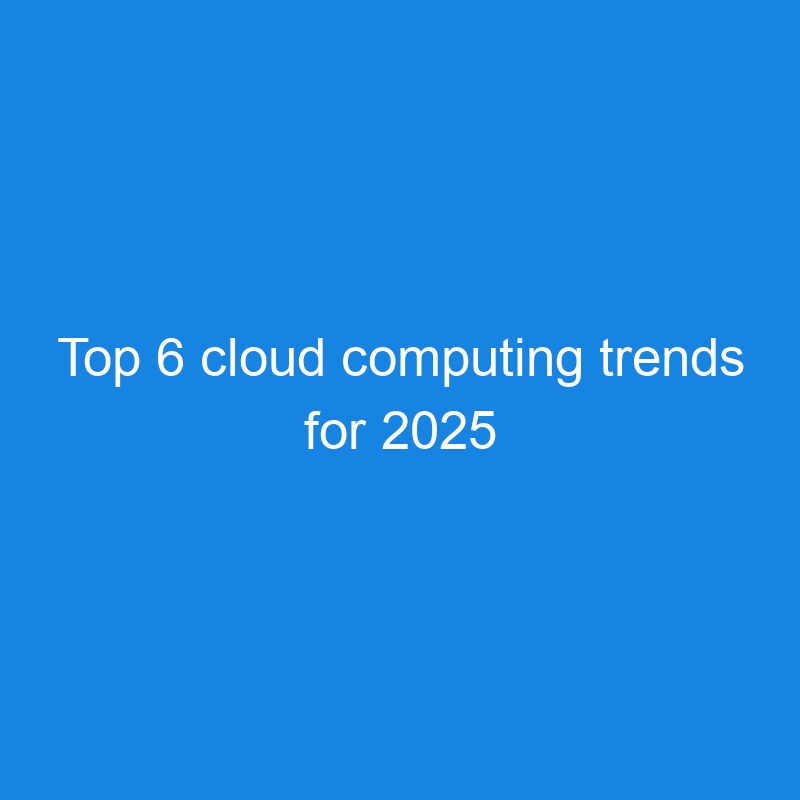Member post by Sameer Danave, Senior Director of Marketing, MSys Technologies
I’m excited about our new project but overwhelmed by all the technological changes,” one of our solution architects shared in an MSys Slack channel before dropping a dozen links to the latest AI advancements. He’s a seasoned tech veteran who might need a hug. And who could blame him? Even in an industry used to rapid evolution, where new technologies emerge almost every quarter, AI is accelerating change at unprecedented rates. AI-powered cloud scalability, next-gen tools and platforms, and edge computing advancements stretch everyone’s capacity to keep up.
To clarify this whirlwind, I spoke with technology professionals at MSys Technologies and worldwide to uncover the latest cloud computing trends—AI-focused and beyond. This blog is here to keep you up to date on the essentials. So dive in and explore what’s next in cloud computing!
1. AI-Powered Cloud: AI as the Core of Cloud Transformation
AI has transformed multiple industries, and cloud computing is no exception. In 2025, AI won’t just be another service running in the cloud—it will be the intelligent force optimizing every aspect of cloud operations. From real-time resource allocation and automated scaling to intelligent systems countering threats, AI will play a pivotal role in reshaping the cloud landscape. Businesses that embrace this paradigm shift stand to reap extraordinary rewards: unparalleled efficiency, dramatic cost reductions, and performance levels once thought unattainable.
2. Edge-to-Cloud AI Integration: Bridging the Gap for Seamless Computing
The future of AI lies in the seamless integration of edge and cloud computing. In 2025, AI workloads will dynamically shift between the edge and the cloud, leveraging each search’s unique strengths. The cloud will handle training for complex AI models, while the edge will manage real-time inferencing, ensuring rapid responses. Next-generation edge platforms will support end-to-end automation, delivering comprehensive solutions across multi-cloud and edge environments.
3. Hybrid and Multi-Cloud Strategies: The Enterprise Favorites for Flexibility
Enterprises worldwide are already adopting hybrid and multi-cloud strategies—for good reason. By blending public cloud services from various providers, companies in 2025 will continue to boost flexibility while avoiding vendor lock-in. Hybrid cloud solutions elevate data storage management, enabling organizations to maximize existing infrastructure while seamlessly integrating public and private clouds. This approach results in scalable, secure, and redundant systems that enhance storage, improve disaster recovery, bolster data security, and keep businesses agile in a rapidly evolving landscape.
4. Serverless Computing: Streamlining Infrastructure for Scalable Solutions
Serverless computing is transforming how software services are built and deployed, reducing the need for infrastructure management. It enables developers to easily deploy code without concerns about underlying infrastructure. This has several benefits, including faster time-to-market, scalability, and lower costs for new service deployments. Given these advantages, serverless computing will see widespread adoption among enterprises globally in the coming years.
5. Quantum Computing as a Service: Mainstreaming Quantum through the Cloud
Quantum computing is beginning to find real-world applications. In 2025, it will step out of the lab and into mainstream business—not through costly hardware investments but via cloud services. Industry giants like IBM, Google, Microsoft, and Amazon are democratizing access to this technology, making quantum capabilities accessible to organizations of all sizes. The potential impacts are profound: from breakthrough drug discoveries to unbreakable encryption, quantum cloud services will unlock innovations previously deemed impossible.
6. DevEdgeOps: Adopting DevOps for the Edge Computing Era
Edge computing is transforming how data is being processed and utilized. Unlike traditional cloud methods, edge computing brings computational power directly to the data source. However, traditional DevOps practices, highly effective in cloud-centric environments, need adaptation for the edge. The “one-size-fits-all” approach can’t tackle the unique challenges of edge computing—such as scale, connectivity, security, and diverse devices. Enter DevEdgeOps: a specialized approach that combines the agility and automation of DevOps with the specific requirements of edge environments. This approach bridges the gap, enabling organizations to manage the complexities of edge computing with the same efficiency and speed that DevOps brings to the cloud.
Embracing the Future of Cloud Computing
The cloud computing landscape 2025 is defined by innovation—AI-powered optimization, seamless edge-to-cloud integration, hybrid strategies, serverless scalability, and quantum breakthroughs. These trends aren’t just reshaping the cloud but transforming how businesses operate and innovate. At MSys Technologies, we specialize in delivering cutting-edge cloud services and solutions tailored to your needs. From strategy to execution, we help businesses stay ahead in this dynamic landscape. The opportunities are immense, and the future of cloud computing is here. Let MSys Technologies guide you.
